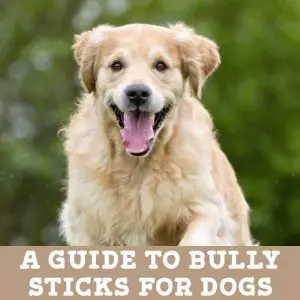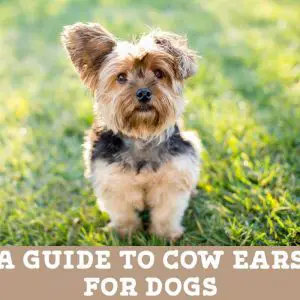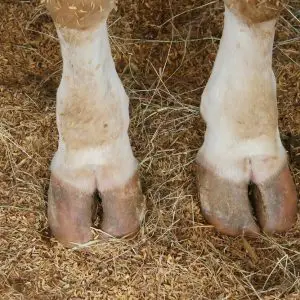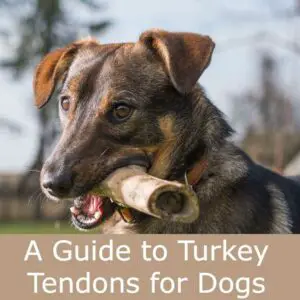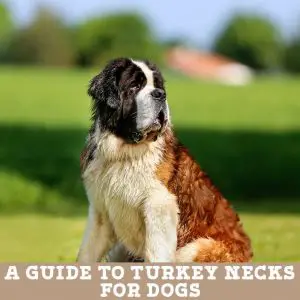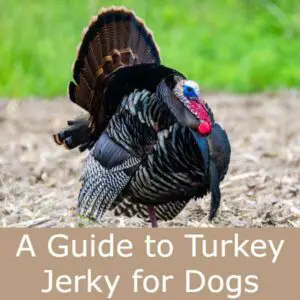Beef gullet is a popular snack for dogs. It is a chew treat that is high in protein, low in fat and very palatable for dogs. What exactly is a beef gullet? Can it be safely fed to your dog? This article will discuss in depth the pros and cons of feeding beef gullets. It will answer all your questions, enabling you to decide if they are a suitable snack for your dog.
Key facts
Beef gullet chews are made by dehydrating the oesophagus of a cow. They are a 100% natural product with no preservatives or additives.
Beef gullet chews can provide a useful way for dogs to develop healthy chewing habits. They are also thought to encourage good oral hygiene.
Beef gullet chews should be fed only as a treat, not as a routine part of your dog’s daily diet as they are relatively high in calories.
The risks of feeding beef gullet chews include choking, bacterial contamination, digestive irritation and gastrointestinal blockages.
Some popular alternatives to beef gullet chews are dental chews, bully sticks, dried fish and beef pizzle sticks.
What is Beef Gullet?
Beef gullet is a natural chew treat which is made from beef oesophagus. The oesophagus is usually split down the middle and flattened into a strip, but some products are left in a cylindrical shape. They are usually air-dried or dehydrated at low heat. They are a common treat used for dogs as they are very palatable, a rich source of protein and contain glucosamine and chondroitin.
They usually are gluten and grain free. They normally contain no preservatives or chemicals although individual manufacturers will vary so always check the label. Strips of gullet are usually 12-15 cm in length. They can be used for puppies over 16 weeks of age as well as older dogs as they are soft and don’t tend to damage teeth.
Provenance
Beef gullet comes from the oesophagus of beef cattle. This is usually a by-product from the carcass that is not fit for human consumption.
Using the by-products means that the process is much more sustainable as all parts of the animals are being put to good use. The gullet is nutrient dense so is a good choice of chew for dogs.
They are readily available in the USA and most countries in Europe. The main producers of beef products in Europe are Italy, Spain, France and Germany.
Other countries such as Australia and The USA produce beef but their safety standards vary greatly compared to EU countries and the United Kingdom so bear this in mind when selecting your product. It is the buyer’s responsibility to source products which have been held to a high standard of animal welfare. Search for products that have been approved by associations like RSPCA Freedom Food Standards, Red Tractor, the Soil Association and Scottish Organic Producers Association.
To reduce the carbon footprint of the product, if at all possible, try to source locally.
Preparation
Beef gullet chews are available as thin flattened strips or they can be sold in the original form in the shape of the oesophagus. They are usually freeze-dried or slowly air-dried. They don’t usually contain any flavourings, salt, sugar or additives.
Beef gullet treats are suitable for small, medium, and large breed dogs as the strips can be broken up. It is always advised to supervise your dog when giving these treats and always allow them access to fresh water while they are chewing them.
raw feeding
Did you know?
Beef gullet chews can be used as part of a raw diet, in addition to their usual raw food. This is because, during the process of dehydration, they are only heated to a very low temperature, so they are still classed as raw food. There are a few important precautions to take when feeding raw food. You must always wash your hands after contact with the product and clean down any surfaces with a suitable disinfectant. This is because, with any raw diet, there is a risk of contamination with harmful bacteria such as Campylobacter, E. Coli and Salmonella. These pathogens may not necessarily cause disease in your dog, however, they pose a huge risk to anyone in the household who is immunosuppressed or has a compromised immune system such as young infants or the elderly.
Benefits of Beef Gullet for Dogs
Key benefits
Mental Stimulation
Beef gullet chews encourage recreational chewing which is a healthy habit for your dog.
Dental Health
It is thought that beef gullet chews can aid in the mechanical debridement of teeth and help to remove plaque and tartar.
Hypoallergenic
Beef gullet chews contain 100% beef so are safe to feed provided your dog doesn’t have a beef allergy.
Nutritional Benefits
Beef gullet chews are high in protein and contain glucosamine and chondroitin which are thought to aid in the maintenance of healthy joints.
Mental Stimulation
Dogs, like humans, learn through play. Recreational chewing is an important part of their development. They learn how to scavenge and hunt for food in the wild by chewing and it is a normal healthy behaviour. (Despite the fact we often discourage them to chew!) Therefore it is important that we offer them something safe to chew in a controlled environment. Chewing also keeps your dog occupied. It is thought to relieve stress and reduce boredom. Small pieces of the treat can be used as a high-value reward when training too. This is a brilliant way to reinforce your bond with your dog and is especially helpful in recall training.
Oral Hygiene & Dental Health
It is thought that hard treats which encourage your dog to chew provide gentle mechanical debridement of the teeth, which may improve the condition of your dog’s teeth. There is currently no scientific evidence to fully support this. Benefits also do depend on how long the chew time of the treat is. If your dog is an avid chewer, there will be minimal benefits for the removal of plaque and tartar. It is important to remember that no products should replace basic dental care. Brushing your dog’s teeth and regular checkups with your vet are the most important aids for good oral and dental health.
Nutritional Benefits
Beef is a nutrient-dense option for our dogs. Beef gullet is easily digestible and provides extra glucosamine and chondroitin for your dog due to the cartilage in the chew. Beef products also contain minerals such as iron, selenium, phosphorus and zinc as well as being an important source of B vitamins.
Hypoallergenic
Some dogs are, unfortunately, allergic to certain food products, including animal proteins found in dog food. It can be a struggle to safely feed dogs with allergies as some foods will contain traces of the proteins they react to. If you choose a treat such as beef gullet, as long as your dog is not allergic to beef, you can rest assured it is 100% safe as beef is the only ingredient.
Nutritional Information for Beef Gullet
Nutrients
Note: The percentages may not add up to 100% as they are averages from several data sources. Ranges are given when there is a wide variation between products. Find out more about how we calculate nutritional information >>
This is a rough guide, it is important to remember that the individual components of each chew will vary. The composition also varies depending on other factors such as the drying process used and the individual animal the treat came from.
Protein
Beef gullet treats are high in protein. Protein is important for many bodily functions including the growth of healthy muscles, tissue repair, the production of hormones and enzymes and the maintenance of a healthy coat and skin. Most dogs, especially active working dogs, require a high amount of protein in their diet.
Growing puppies have an additional requirement for protein to facilitate their development. If you are feeding a good quality puppy food you shouldn’t need to rely on extra protein from treats though. Be aware that too much protein can be detrimental to some dogs with health issues such as liver or kidney disease, so consult your vet before adding in more high-protein treats.
Fat
Beef gullet treats are usually low in fat. Low-fat treats are useful for dogs that are obese as well as dogs that may suffer from pancreatitis episodes or are diabetic. The problem we have is that the fat content usually varies depending on the brand and how the gullet was dehydrated. This means that the fat content often isn’t consistently low.
It is important to always read the product label thoroughly to ensure you are feeding your dog a suitable treat with appropriate fat content.
Vitamins, Minerals & Compounds
Vitamins and minerals
Iron – vital for the transportation of oxygen around the body in the bloodstream.
Phosphorus – important in the maintenance of healthy teeth and bones. Also helps to regulate kidney function.
Zinc – maintains a healthy immune system, and is important for the proper functioning of hormones and enzymes.
Magnesium – important in enzyme function and passing nerve impulses between muscles and nerves.
Selenium – aids in DNA synthesis and healthy thyroid function. Also plays a role in metabolism.
Vitamin B3 – important for the maintenance of healthy nerves and skin.
Vitamin B6 – important in hormone regulation and regulation of the nervous system. Also helps to generate glucose.
Vitamin B12 – aids in the formation and growth of red blood cells and helps maintain a healthy nervous system too.
Glucosamine – this is thought to aid in the lubrication of joints and reduces inflammation in the joints as well, therefore improving mobility and reducing pain.
Chondroitin – is thought to be important in maintaining the viscosity of joint fluid. It is also an important building block for the production of cartilage, giving the cartilage structure and compression resistance.
These are all important nutrients listed. Bear in mind that the quantities in beef gullets will vary. There is currently no research that confirms beef gullet contains enough of each of these elements to provide the correct amount for your dog. Therefore beef gullet is not a reliable source of these nutrients. It is not to say there aren’t nutritional benefits, however, beef gullet should not, in any way, be used as a substitute for a balanced diet. If you think your dog has a deficiency in anything, consult your vet first before you make any changes to their diet.
Calories
Do Not Overfeed
Beef gullet treats are high in calories. The calorie content will vary greatly depending on the size of the treat and factors such as the fat content. For example – there are currently beef gullet chews on the market boasting 3.5% fat, and others that claim to have 16%. Depending on the size of the gullet, this could be 200-300 kcal/treat. A 10kg dog requires 500 – 750 calories per day depending on their level of activity, so feeding a couple of beef gullet chews could amount to a large proportion of their daily allowance.
Feeding Guide
Beef gullet chews should be viewed as an occasional treat and as an additional extra to your dog’s diet, not as a meal replacement for their usual dog food. They do contain a relatively high amount of calories, therefore if used too frequently, it will cause your dog to gain unnecessary weight. One chew a couple of times a week is sufficient for a small breed dog. If your dog is prone to pancreatitis flare-ups or has diabetes or any gastrointestinal issues, it is best to avoid treats like beef gullet and consult your vet for more suitable alternatives.
Downsides & Risks of Beef Gullet for Dogs
Very Small Risks
Risks are very small but include choking hazards, bacterial contamination, digestive irritation and gastrointestinal obstruction.
Choking Hazard
As with all chewable treats, beef gullet chews pose a choking hazard. The risk increases if the chew is an inappropriate size for the dog and if the dog is known to chew very rapidly (as there is more chance they will inhale parts of the chew).
Beef gullet contains cartilage and connective tissue. Parts of the beef gullet are very tough and can splinter, creating sharp edges which can cause a number of issues when being chewed and swallowed. Sharp pieces can become lodged in your dog’s airway causing trauma and affecting their respiration. Always supervise your dog when giving these sorts of treats and ensure they always have fresh water available.
Bacterial Contamination
As with any raw food product, beef gullet chews pose a risk of contamination with harmful bacteria. These include but are not limited to – Listeria, campylobacter, Salmonella and E coli.
Your dog is unlikely to suffer serious disease from these pathogens, however, if there is anyone in your household that is immunosuppressed, very young or old – they are in danger of being affected. It is best to avoid beef gullet chews if your dog has any underlying health problems affecting their immune system if they are undergoing chemotherapy treatment or if they are going to come into close contact with any vulnerable humans.
It is also vital that you ensure strict hygiene measures such as cleaning with suitable disinfectant products and washing hands meticulously.
Digestive Irritation
Some dogs will react badly to treats such as beef gullet. Some dogs are just sensitive to this type of chew, others are allergic. Your dog may tolerate a small amount, but larger amounts may cause gastrointestinal upset such as vomiting and diarrhoea. When first feeding your dog beef gullet, feed a small amount and build it up slowly, closely monitoring your dog as you do so.
Gastrointestinal Obstruction
When your dog is chewing beef gullet, large pieces can splinter off and sometimes they have sharp edges or can be awkward shapes. If swallowed they can become stuck at the back of your dog’s throat or perforate part of their gastrointestinal tract. An obstruction in your dog can be fatal if left untreated. Occasionally, pieces can perforate the guts, this is a medical emergency, if you are suspicious your dog has an issue, seek veterinary attention immediately. Signs of obstruction or perforation include lethargy, abdominal pain, vomiting, inappetence, diarrhoea or constipation. It is important to ensure the beef gullet is an appropriate size for your dog, if you are worried you can cut them into smaller pieces. Ensure larger breeds do not attempt to swallow the beef gullet whole.
Beef Gullet for Puppies

Advice will vary but most manufacturers recommend using beef gullets from 16 weeks of age. As with all treats, puppies must be supervised constantly when eating beef gullets.
Feed in moderation as they are calorific and may cause unnecessary weight gain and gastrointestinal issues. They should be fed infrequently – every 1-2 weeks only as a special treat or training aid. Puppies often enjoy beef gullets when they are teething. They can be a good way to mentally stimulate your puppy. Beef gullet contains a high amount of protein, however, they must not be relied upon as a protein source for your puppy. They need to be fed a good quality complete dog food – that will contain everything they require to develop into a healthy dog.
Alternatives to Beef Gullet
- Dried Fish Such As Sardines – these snacks are a healthy, high protein, low-fat treat and they have the added bonus of containing omega fatty acids. They are a lot more gentle on the teeth so may be suited to younger puppies or elderly dogs with dental disease who cannot chew as much.
- Edible Dental Chews – there are many dental chews on the market. The majority consist of potato starch. Lots of products are approved by vets so ensure you pick one that is suitable. The Veterinary Oral Health Council has a useful list here. Dental chews can be very high in calories so beware of unnecessary weight gain when feeding.
- Beef Tendons – the nutritional benefits are similar to beef gullets. They are generally larger in size and therefore last longer than beef gullet chews so potentially better suited to larger breed dogs.
- Bully Sticks – these are also similar to beef gullets. They are made from dehydrating the inner tendon of a bull penis. They have a high-calorie content so must be fed infrequently. They are also reported to have a strong odour so some owners avoid them for this reason.
FAQs
Beef gullet chews are good for dogs. They are high in protein and low in fat. They are a highly digestible chew and they provide a natural source of glucosamine and chondroitin.
Beef gullet chews are safe for dogs, as long as owners supervise their dog whilst they are eating. Owners also need to be aware that they can sometimes cause choking or gastrointestinal obstruction. They can carry potentially harmful bacteria so strict hygiene measures must be taken. Some dogs may be allergic to beef products.
Dogs certainly do like beef gullet chews. They have a strong odour which is not as popular with owners, but dogs seem to really enjoy it. They are highly palatable and easily digestible meaning they are a brilliant choice for dogs.
As previously mentioned, beef gullet chews are high in calories, therefore it is important to limit them to prevent your dog from gaining weight rapidly. One to two treats a week is a suitable amount.
Beef gullet chews can last a different amount of time depending on your dog. Larger breed dogs will finish the chew in less time as they have bigger, stronger jaws. Younger dogs with their puppy teeth will take longer to finish a chew as they don’t have the same strength in their teeth and jaw.
Beef gullet chews can cause a blockage. This is a very rare occurrence but occasionally pieces of the chew can become lodged in the gastrointestinal tract and cause a blockage or perforation of the gut. If this occurs it is a medical emergency and you must take your dog to the vet immediately.


